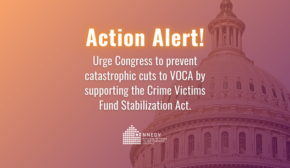Women of Color and Barriers to Safety
October 21, 2015
This post also appears on the YWCA Blog.
When help is needed, who are the first people that we think to call? Most don’t hesitate to call first responders – the police, firefighters, and Emergency Medical Services. However, communities of color, and specifically women of color, face different challenges and may not seek necessary assistance for reasons that are unique to their communities.
Women of color, especially Black women, may not seek help because we are expected to be strong. The “Strong Black Woman” narrative is played out across communities all over the world. Despite whatever atrocities we may endure, we are often told to remain strong, be the head of the household, and take care of everything. This façade of strength makes it even more difficult for women of color to reach out for help for fear of failing their families or being or appearing weak.
Communities of color are frequently tightly woven together in a number of ways including language, culture, and/or sharing the same nationality. Due in large part to these factors, support systems are important for survivors. If the community that the survivor is a member of disagrees with her decision to seek help, or discourages her outright from leaving her abuser, that can be detrimental to that survivor’s network of friends and family. Further, if the survivor decides to go forward with pressing charges against her abuser, the survivor could be exiled from the community. Choosing between one’s community and one’s safety is an extremely difficult decision to make.
There is also often a deep distrust of law enforcement in communities of color, due to historical racial and cultural biases. Moreover, if the police are called and the abuser is taken into custody and charged, there is also the fear of retaliation and further abuse upon release. It is also important to note that men of color are imprisoned at much higher rates than White men and face higher rates of abuse and mistreatment while in police custody. These factors impact how survivors interact with police, and whether they even call the police in the first place.
While this is not an exhaustive list of the perils that women of color face while contemplating fleeing their abusers, it does provide the basis for beginning to understand their plight. As we continue to identify these factors, we will also work tirelessly to ensure that women of color have access to the resources and information they need in order to make informed decisions about their safety.
By Kristelyn Berry, Senior Office & Safety Net Coordinator at NNEDV






